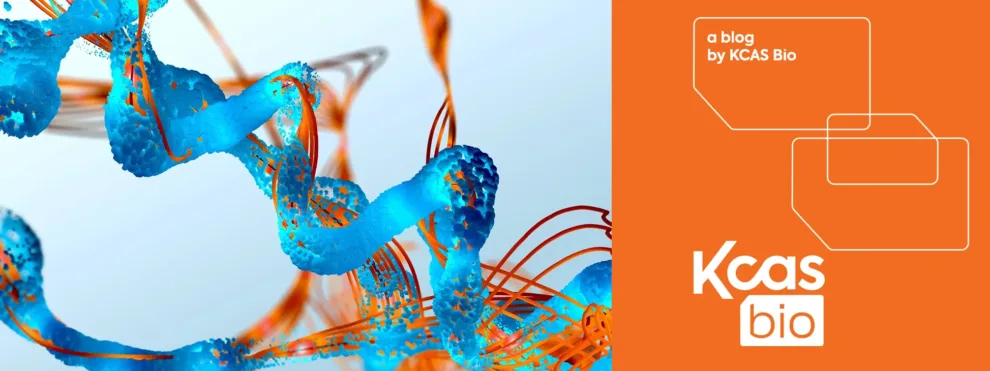The exploration of Targeted Protein Degraders (TPD) as a therapeutic modality began over twenty years ago. Since then, research and development in this field have steadily advanced. Starting in 2019, rationally designed small molecule TPDs entered clinical trials. This innovative therapeutic modality utilizes the cells’ endogenous protein degradation machinery to selectively eliminate proteins contributing to or driving disease pathogenesis. With potential applications in treating both solid tumors and hematologic cancers, TPD is an exciting and promising area in cancer therapy.
This blog post will review the primary types of TPD therapeutics and explore their potential benefits and challenges. Additionally, we will highlight the critical role that flow cytometry can play in supporting clinical studies within this growing field.
Targeted Protein Degraders
Targeted Protein Degraders are an important emerging class of therapeutics gaining significant attention. TPDs engage the cell’s endogenous machinery to eliminate a target protein and its downstream function. Specifically, TPDs leverage the ubiquitin-dependent proteolysis pathway to degrade intracellular proteins. TPDs are proving to be advantageous in the treatment of diseases that have been previously challenging to target with conventional small molecules.
TPDs fall into two main categories: Molecular Glues (MGs) and proteolysis-targeting-chimeras (PROTACs). MGs are monovalent small molecules that promote protein-protein interactions. When the small molecule binds a target protein, it creates a neo-protein. Through binding, the neoprotein can be stabilized, destabilized, or degraded. In the context of protein degradation, MGs promote the physical interaction of proteins with E3 ligase, resulting in target degradation. Interestingly, Molecular Glues, as protein degraders, were first discovered opportunistically through research on the mechanism of action of natural products such as FK506, cyclosporin, and rapamycin. (Schreiber, 2024). Fueled by a recognition of their potential impact as a therapeutic modality, their identification is now being driven by small molecule screening, rational design and even AI directed efforts (Schreiber, 2021).
PROTACS are distinct from MGs. These heterobifunctional small molecules target proteins of interest through a bivalent design. This targeted approach contains a protein binding ligand, a linker molecule, and a ligand to an E3 ubiquitin ligase. Once the target protein is bound, it is ubiquitinated and degraded by the cell’s machinery. The degradation process mediated by PROTACs is catalytic, meaning a single PROTAC can bind and degrade multiple copies of the target protein. (Miklos Bekes, 2022). Due to their larger size compared to MGs, the rationally designed PROTACs require careful consideration for drug delivery and bioavailability. The PROTAC must be sufficiently soluble for distribution and permeable enough to reach the intracellular space. Upon reaching the appropriate location, successful protein degradation depends on many factors including a proper PROTAC linker and structure for binding. (Barmak Mostofian, 2023)
Considerations and Application
Molecular Glues and PROTACs offer unique advantages compared to other small molecule therapies. One key benefit is their ability to selectively degrade disease-causing intracellular proteins rather than solely inhibiting their function, potentially leading to more effective therapeutic outcomes. By degrading the protein, TPDs may also overcome resistance mechanisms often emerging with inhibitor-based treatments. Targeted Protein Degraders enable targeting of proteins that have been historically challenging to inhibit by traditional small molecules, thereby expanding the range of potential therapeutic targets.
As with any other therapeutic, the advantages are balanced by several considerations. Developing effective PROTACs is complex and requires extensive optimization to ensure effective binding and degradation. Understanding molecular distribution and metabolism is crucial, as is ensuring specificity to avoid unintended degradation of non-target proteins. Additionally, the efficient delivery of PROTACs to the target tissues remains a challenge, especially for certain diseases.
TPDs are currently in clinical trials for a variety of disease indications. The primary focus has been on diseases with well-characterized target protein involvement, diseases where clinical efficacy has been demonstrated by protein inhibition and diseases with an unmet need. These include but are not limited to, treatment of breast cancer, prostate cancer, non-small cell lung cancer, Acute myeloid leukemia, Chronic myeloid leukemia, Multiple myeloma, and non-Hodgkin lymphoma. Beyond oncology, TPDs, specifically PROTACs, are also being considered for immune-related and autoimmune and neurodegenerative diseases. Since the initiation of the first PROTAC clinical study, the number of therapeutics evaluated in this space has grown and promises to further expand.
Final Thoughts
At KCAS Bio, we are here to support your Bioanalytical needs. With experience across many therapy modalities, Target Protein Degraders are no exception.
In fact, Flow cytometry plays a crucial role in supporting the development and application of targeted protein degrader therapies. By utilizing flow cytometry techniques, we can support the precise quantification of cell surface and intracellular proteins including phosphorylated proteins and more. Leveraging validated flow cytometry methods, we enable researchers to monitor the degradation of target proteins in real-time. By analyzing changes in protein expression, flow cytometry helps assess the efficacy and specificity of these therapies, producing critical decision-making data. Additionally, flow cytometry can support identification of cellular subpopulations that respond differently to treatment, offering insights into resistance mechanisms and informing the development of more effective, personalized therapies.
Want to learn more? Let’s talk! Reach out and schedule a discussion today to learn how we can support your Targeted Protein Degrader research with our flow cytometry expertise.
References
Barmak Mostofian, H.-J. M. (2023). Targeted Protein Degradation: Advances, Challenges, and Prospects. Journal of Chemical Information and Modeling, 63, 5408-5432.
Miklos Bekes, D. R. (2022, March). PROTAC targeted protein degraders: the past is prologue. Nature Reviews Drug Discovery, 21, 181-200. doi:https://doi.org/10.1038/s41573-021-00371-6
Schreiber, S. L. (2021, January 7). The Rise of Molecular Glues. Cell, 184, 3-9.
Schreiber, S. L. (2024, June 20). Molecular glues and bifunctional compounds: Therapeutic modalities based on induced proximity. Cell Chemical Biology, 31, 1050-1063.

